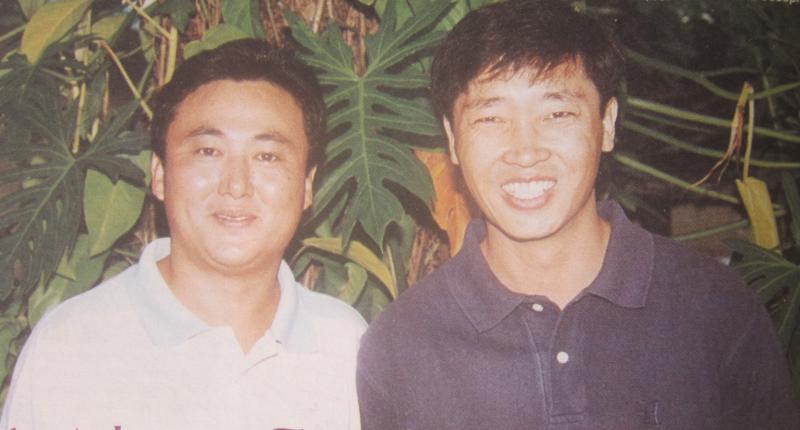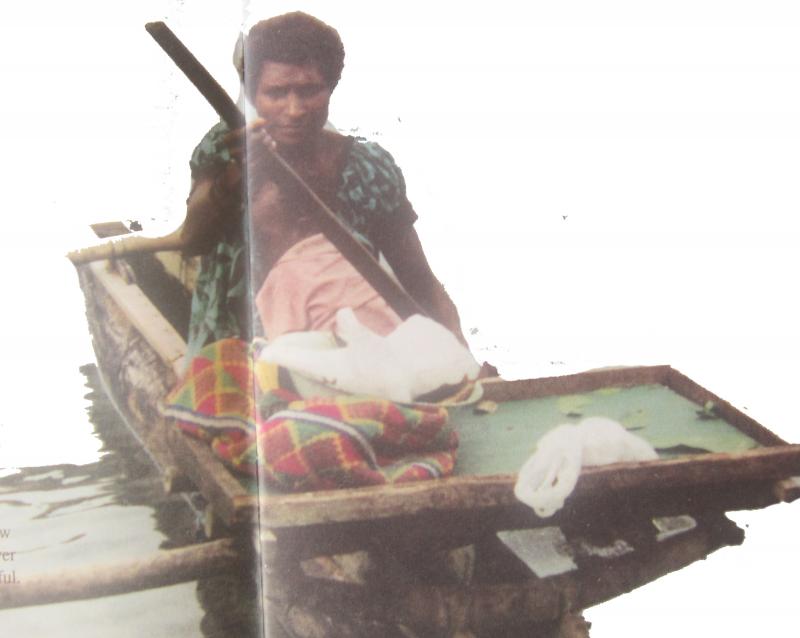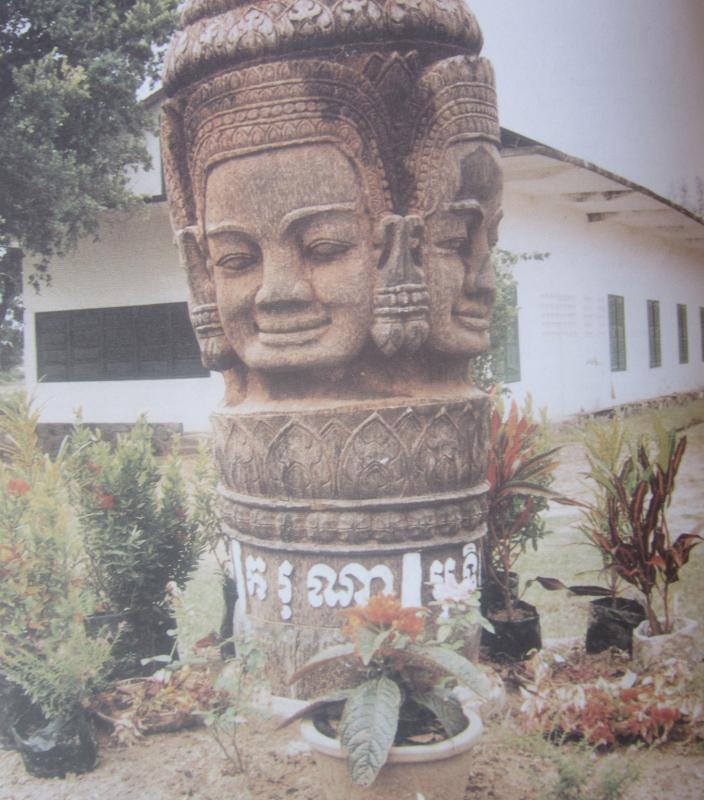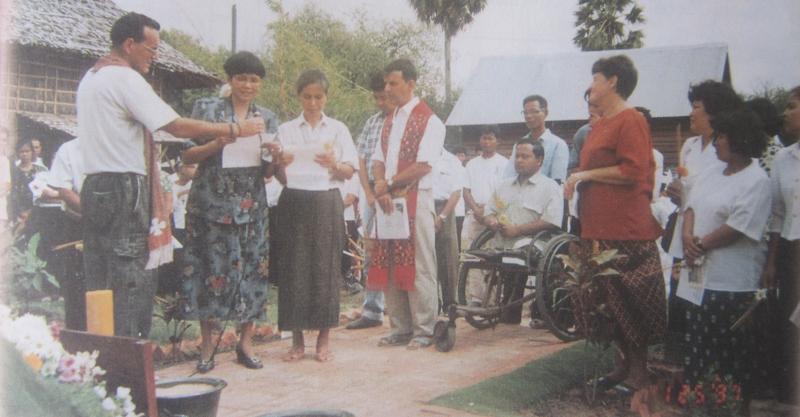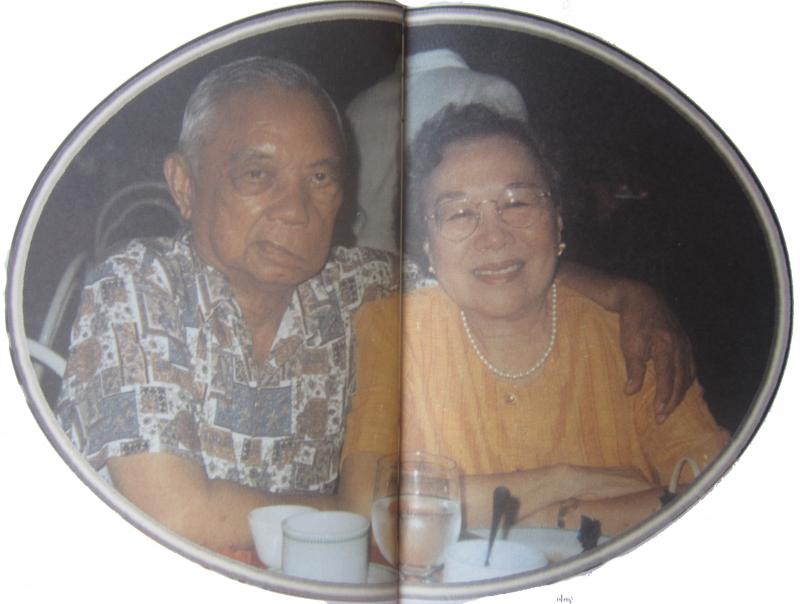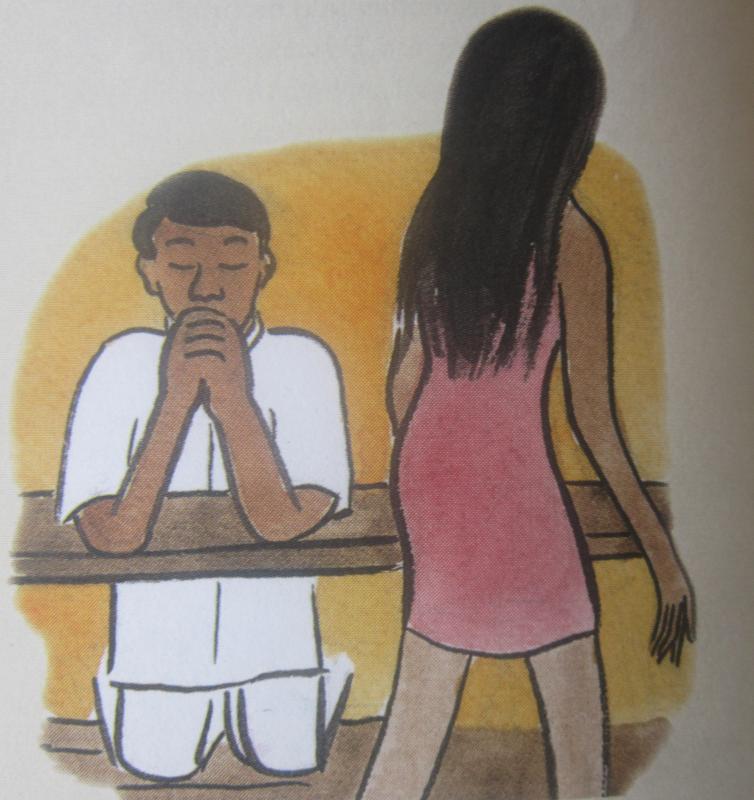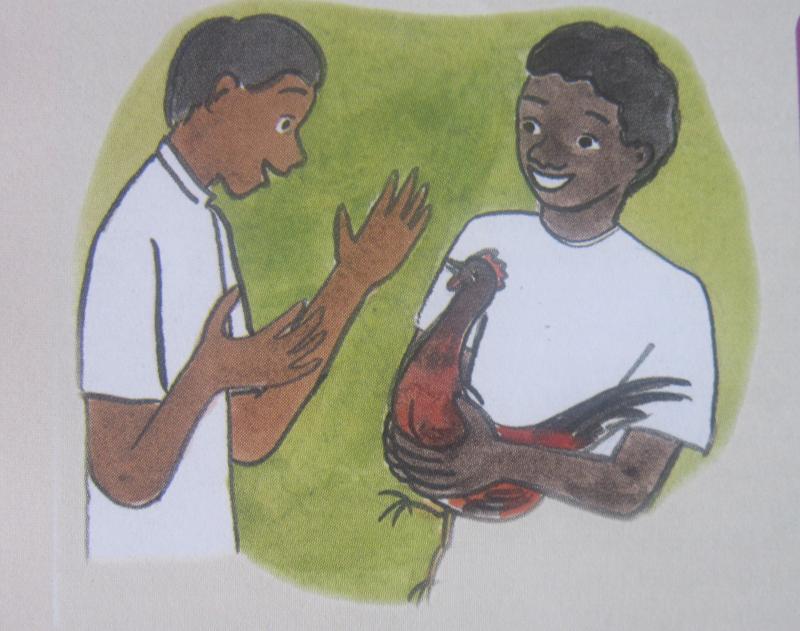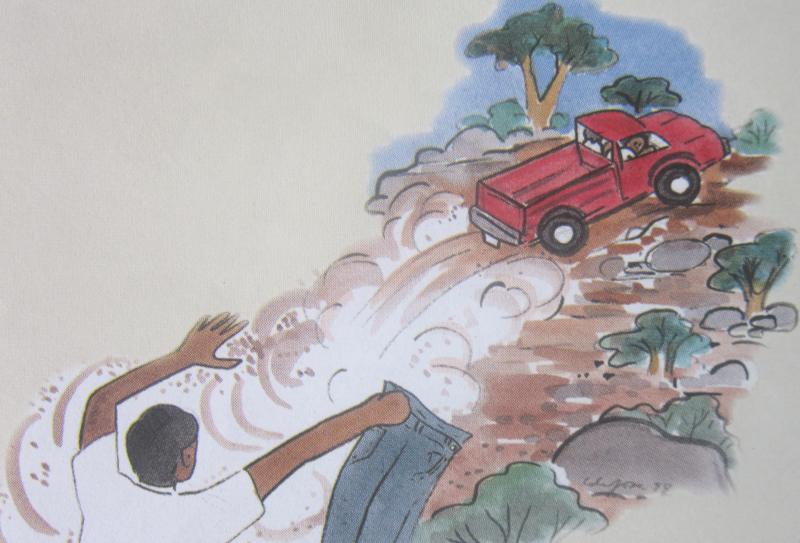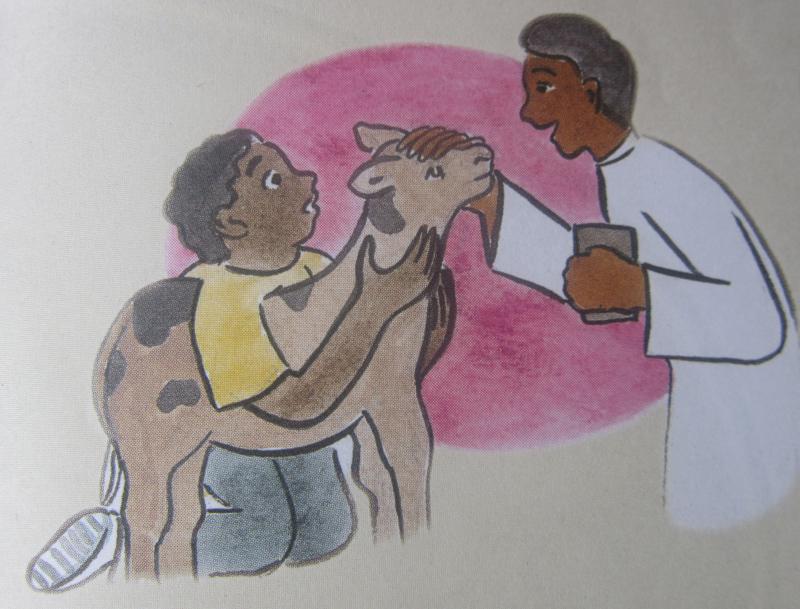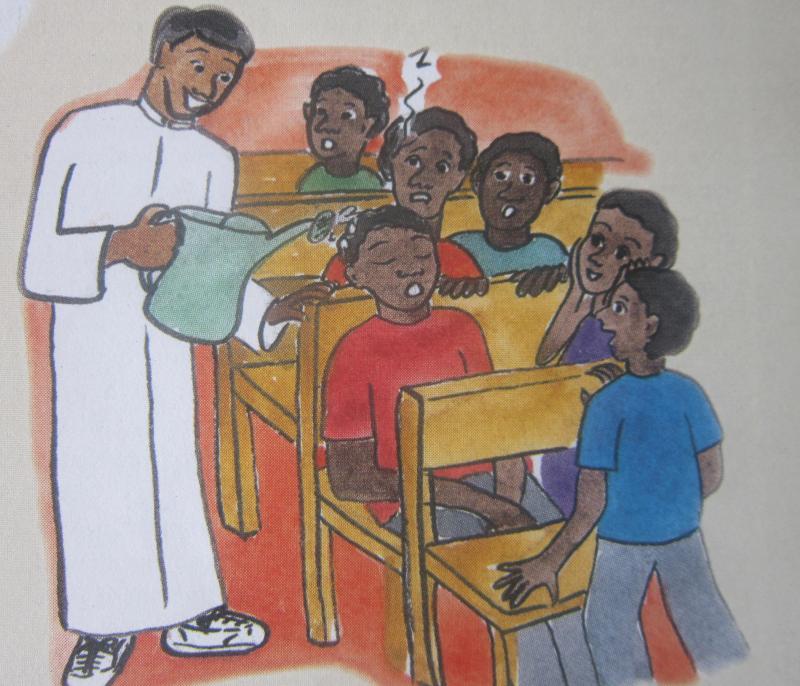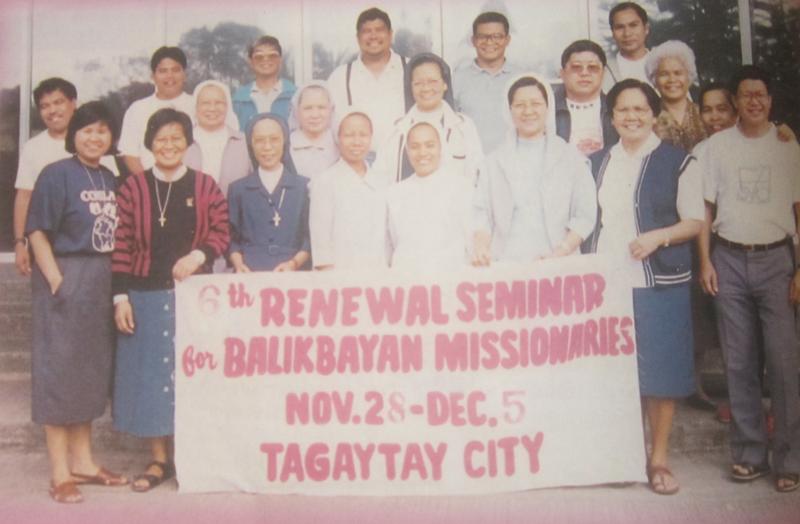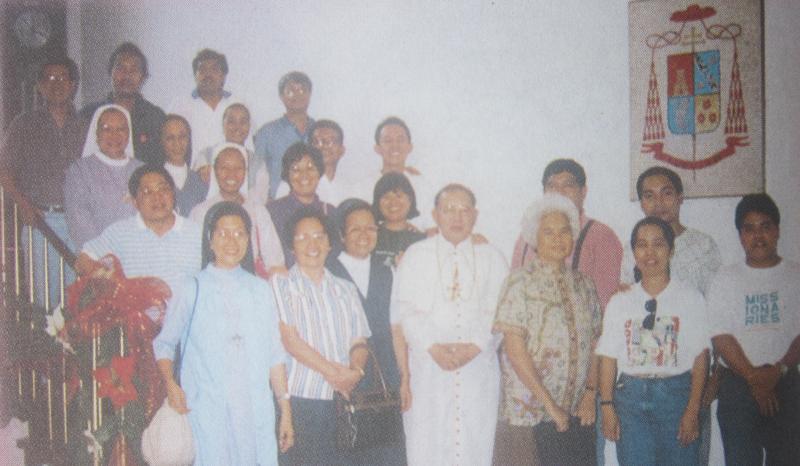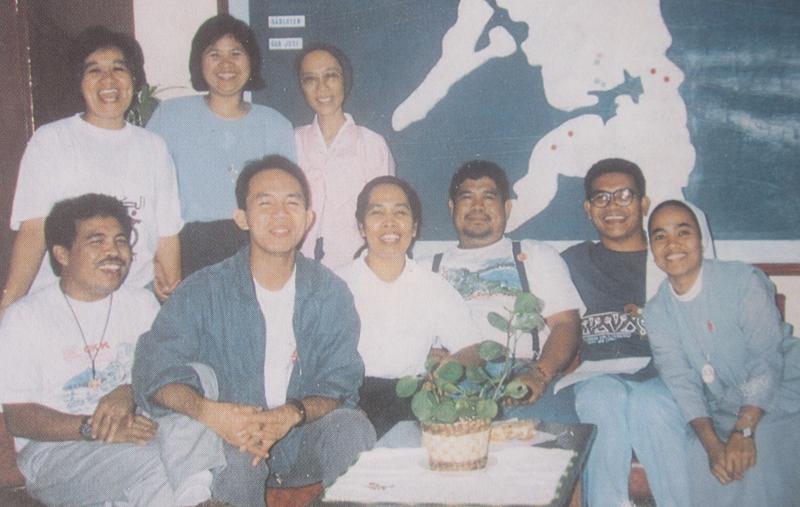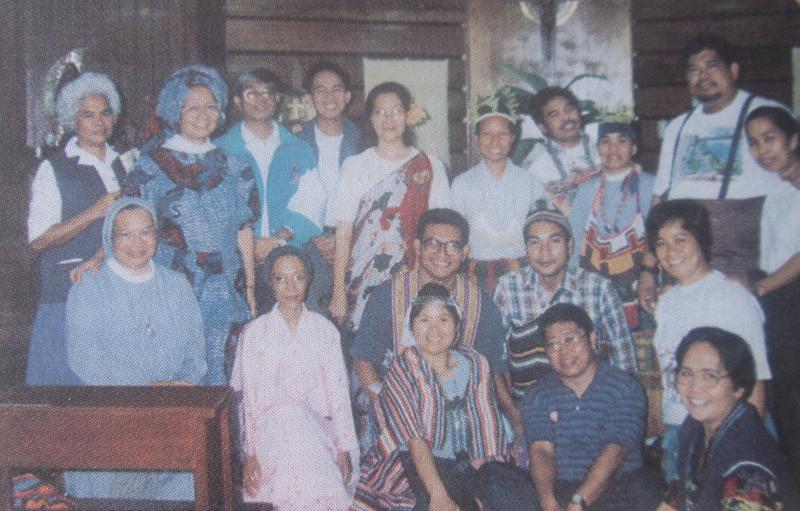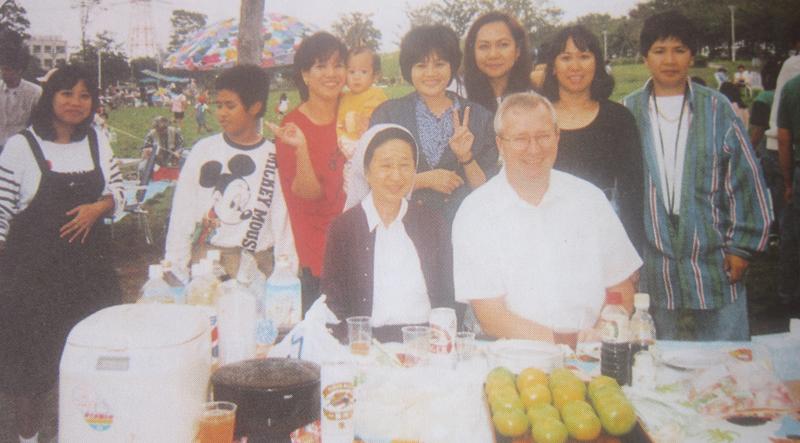September-October 1998
A New Springtime Coming
By Tony O’Brien
Fair exchange
In March 1997, Frs. Joseph Cho and Felix Lee of Seoul Archdiocese, who were ordained in 1992, came to the Philippines for six years as associate Columban priests. In the Philippines they will work with Columbans and Filipino diocesan priests. In September 1997 two newly ordained Columban Filipino priests, Leo Distor and Abraham Sumalinog returned to Korea where they had spent two years as students on overseas training.
Crossing boundaries
There are good reasons for this movement of personnel between two so-called mission countries. In recent years emphasis has been mutual enrichment between churches with every Church having something to give, receive, teach and learn. Columban missionaries and others have highlighted the urgency of going out, crossing boundaries of culture, language and faith, to make the knowledge, love and compassion of Christ present to other people. On return to their countries of origin, missionaries bring back fresh experiences of Church and mission to their communities at home.
Saving Souls
Prior to Vatican II, missionaries were sent from Europe, America, Australia and New Zealand to bring the light of faith to those who lived ‘in darkness and the shadow of death...’ (Lk. 1: 79). At that time the emphasis was on saving souls and bringing people into the warmth of the Church. Later the priority was the establishment of local Churches with their native hierarchies. More recently, there are renewed efforts to share ideas, programmes and personnel between churches in the various countries. Missionaries have taken on fresh challenges like the inculturation of the Gospel and the care of the environment.
Young Churches take over
With vocations to the priesthood and religious life decreasing in the so- called mission sending churches, there is a new awareness of there ole which the young and dynamic Churches must undertake in their ongoing task of sharing the faith with other cultures and peoples. In the final words of St. Matthew’s Gospel, Jesus send his disciples into the whole world to preach and baptize and He reassures them that all of us, even to the end of time. All Christians by virtue of their baptism and Confirmation are called to participate in the priestly, prophetic and kingly role of Christ.
Growth of Korean Churches
The growth in the Korean Church brings with it the challenge to send missionaries, clerical, religious and lay to other countries. One could argue that with only four million Catholics out of a total population of 45 million, there is still much to be done on the home front in reaching out to the evangelized. However in the church’s history, when a local Church was actively engaged in missionary outreach, it also became vigorous and energized at the local and national levels."For in the church’s history, missionary drive has always been a sin of vitality, just as its lessening is a sign of a crisis of faith," says Pope John Paul (Redemtoris Missio No 2).
Danger of introversion
There is the danger that a Church in a country like Korea might get too introverted and locked into its own properties, even worthwhile ones. Missionaries who have links and networks with their colleagues in many countries throughout the world, help to keep the challenge and urgency of mission before the Korean Church. Korean bishops expect and appreciate this contribution from missionaries because they realize the danger of undue concern for the local church’s welfare to the detriment of outreach to other people and cultures.
A new spring coming
Korean Church personnel have certain difficulties in going on overseas mission. While many Korean tourists go on trips all over the world (this is rather a recent phenomenon) the ‘hermit kingdom’ mentally of Korea is still much of a reality. Koreans with a great appreciation for their own values, food, customs, and way of life may often experience difficulty in accepting new models of Church and settling down in an environment quite different from their own. The relativity small number of vocations to missionary societies within Korea would seem to give support to this view. I feel that in the not too distant futures all his will change and there will be the blooming of a new spring, when many Korean missionaries will go out to share their faith with others.
New Ministry
Very few religious congregations from traditionally mission sending countries had a commitment in Korea prior to the 70s and 80s. Consequently the usual focus for priestly work is the parish. The normal question that a Catholic lay person asks a priest is about the location and size of his parish. Because of this reality, many of the ministries undertaken by male and female religious in other countries, e.g. retreat work, counseling for priests and religious, renewal courses and inculturation of the Gospel message, have been at least partly neglected even up to the present time.
Pivotal Role of Missionaries
Missionaries, even if they themselves cannot make big contribution in these areas, are in a good position to point out this defect in Korean Church and encourage the leadership to sent local personnel overseas to acquire skills to response to the many needs of the modern church and world.
Missionary activity is a sign of faith Fall-off of missionary activity is a sign of a crisis of faith.
A Special Place in my Heart
By Sr. Theresita de Lara, FSP
People belonging to the black race always have a special place in my heart. At the age of seven I saw film about Africans being maltreated by the whites because of the color of their skin. I had told myself that one day I would become a missionary teacher and a champion for the human rights of the blacks.
Dream Revived
When God called me to join the Daughters of St. Paul, my African dream was revived. I applied for Africa fives times, but God had his own plan for me. I was not sent there. I was sent somewhere else.
Pleasant Surprise
In 1994, my provincial Superior asked me to go to Papua New Guinea. Though it is not my dreamland. I was surprised to discover that the people belong to the black race. For me, black is indeed beautiful.
Eye for an eye
I had a culture shock to see that Port Moresby (the capital city of Papua New Guinea) and the towns were very progressive technologically. But many of he people are not at home with footwear yet. Many are not familiar with western hygiene. The motto “tooth for a tooth” and eye for an eye” is very much still rule of life here.
Women do the work
Women are considered ‘second-class’ citizens and they do not mind this. Mothers carry their baby in one arm and paddle the canoe with the other arm in crossing the sea to the mainland to buy food and other necessities. Meanwhile, her husband is having a drinking spree with his friends at home.
Freedom Loving People
I admire them most for their love for life. Babies are very much welcomed in the family. Another good quality of these people is their utter lack of inhibition. They can be with the Prime Minister even in their old clothes and bare feet. They do not care what others think about them. They walk in the streets, talk with people and act freely. They are a freedom-loving people. I thank God for sending me here.
The Daughters of St. Paul serve in the local Church through the Catholic through the Catholic Book Center. We offer books, videos. Audio cassettes and other religious articles to assist other missionaries in forming individuals into fully integrated persons and in bringing about some attitudinal changes.
Art of Prayer
By Anthony de Mello, SJ
Somewhere early in my religious life I had the great good fortune of making a retreat under an extraordinary man, Father Jose Calveras, who had the reputation of teaching people how to pray during his retreats. I knew of venerable old Jesuits who had been many years in religious life and came away from Father Calveras’ retreat saying, “This man has really taught me to pray,” not entirely accurate, of course, because there’s barely any Christian who doesn’t know to pray in some way or other. I suppose what they meant was that Calveras had thought them to pray more satisfactorily and in greater depth. This he certainly did for me.
I went to his retreat full of great expectations. But within a couple of days I was afflicted with all my usual prayer problems. When I took them to Father Calveras, he said to me, quite simply, “How do you pray?” (It struck me later that no one before had asked me that question point blank.) So I began to describe, step, what I did in prayer. “I take some point for meditation and get started on that,” I said, "and within a minute or two my mind wanders. I’m hopelessly distracted." "What do you do then?" asked Calveras. "well, when I realize I am distracted (and that isn’t too soon generally) I come back to the point I was meditating on.” “And then?” said Calveras. “Then I’m distracted again.” “And then?” Calveras was very patient while I explained how, in my prayer, I moved from meditation to distraction, to meditation, to distraction – with the distraction generally accounting for ninety percent of the time, I have met dozens of people since then who have had exactly the same experience and I wouldn’t be surprised if this were the experience of most of you.
Calveras then said to me, “What you are doing is thinking – meditating. You are not praying. Nothing wrong with meditation, of course, provided it helps you to pray. Tell me, do you have your rosary with?” Yes,” I said. “Pull it out, will you”? (I was a very young Jesuits and Calveras was an old man. He could so this sort of thing with impunity.) I did. “Do you know how to use that?” “Of course I do.” Then why don’t you?” “What?” You mean I should say the rosary during meditation?” I was a little shocked and showed it. What I did not show were the thoughts that went through my head; they were something like this: Does this man, this reputed master in the art of prayer, seriously expect me to say the rosary during meditation? I had come to associate the rosary with very simple, ignorant people – the prayer for farmers and fisherfolk, and the sort of thing to fell back upon if you were particularly disturbed in prayer and could do nothing else. A sort of second best but I was perfectly capable of meditating, I had just completed my studies in philosophy.
Calveras in his quiet way went on, “Say a decade, praying to Our Lady to obtain for you the grace of prayer, the grace to overcome your distractions. Then come back to your meditation if you wish. And if you are still distracted, say another decade and another. And, possibly, give up your meditation altogether and just pray for all the graces you need. Pray for your fellow retreatants. Pray for those you love. Pray for the world. The fruit of a retreat is not obtained through meditation and deep reflection it is a pure gift of God and while a certain amount of reflection is helpful, even necessary, this gift is obtained though asking, through begging. So beg for it and the Lord will give it to you. Ask for the grace to pray. Ask for the grace to be generous with Christ. Ask for the grace of experiencing his love.”
Calveras clearly took gospel teaching on prayer quite literally. My later experience was to show me that this was the main reason why he was indeed a mater in the art of prayer. He seriously believed, and taught us to believe, and all we had to do was to ask the Lord for what we needed, and the Lord would not let us down. He said to us, “The key to the art of prayer is the prayer of petition. Many people never learn to pray because they have never learnt to make effective use of the petitionary prayer. The hand outstretched o beg obtains what the hand pressed against one’s head to think does not.
“The hand outstretched to beg obtains what the hand pressed against one’s head to think does not.”
Be Patient with Us
By Fr. Eugene Canete, CICM
On the afternoon of December 18, 1995, I was ordained a priest in Mandaue City, Cebu, the event was like a Family Day, a grand reunion of relatives, friends and confreres. Some interpreted the occasion as standing for the missionary animation of my parish. For myself, it was more of a Thanksgiving Day for a dream come true. Truly, I thank God for all that has been in my life.
Back to Africa
Two months after, I left the Philippines to become the new parish priest of a place called Chibuluma, Zambia. This mission is familiar because I had served her for three years as an interm (a "professional trainee" ), an animator of the young boys and girls and later priest-in-charge. In the next three years or more, Chibuluma will again be my home.
Many Poor
Chibuluma is home to many poor people – the charcoal burners, market vendors, those engaged in small-scale business and, after quite a number of lay-offs now in the mines, the ex-miners as well. “Chibuluma has never really recovered from her situation of poverty,” quipped one of the residents. This makes me wonder how our poor people live everyday considering the economic inflation. In fact, not far from Chibuluma is another growing population of poor settlers, in a place called Chibote, a parish on its own.
A Celebrating and Concerned People
Up to now, I am still amazed at how our poor can also be a celebrating and concerned people as well, a week after I arrived, in Chibuluma, a grand welcome was tendered for me. The people were singing and dancing during the Mass. After communion, short speeches of encouragement and their hopes for their new priest were shared by the leaders of different small Christian communities. This kind of celebration was also multiplied in the other parishes, in two outstations and by some small group in the parish.
There was likewise offerings of gifts, something admirable and yet they can also be unclear to the mind. Their sense of spontaneous offering of gifts in admirable. How do they do that? For most of them, life is simply living for what they receive daily, or by the grace of God! And yet the amount of money and foodstuff I received on that day was so great quantity that I was puzzled myself. Where could they come from? Have they learned this from Gaitus (in 3 John5) who rendered hospitality to traveling missionaries?
She washed my face
What was even more touching for me was the gesture of concern shown by my Zambian foster mother (who stood for my parents during my deaconate ordination in this same place in 1994). Taking with a basin of water and towel, she approached the altar and washed my face with these words: If ever you fell tired with us, just wash your face to cool yourself. In other words, be patient with us. You are our father.”
Looking forward with Hope
I look to the future with hope (I think this is the only way!) when our people are happy, I hope to share in their happiness. And deep down, I also pray the their joy may be sustained, one that is lasting and liberating, the best that we can do together is really when we all search for a ways to share out faith, prayer life, and the Gospel values with of another in community. I believe this should no be impossible. The realization of “working together and working with” can lead to a bright outcome. Maybe with the people of Chibuluma, this can be possible!
I remember Tevye in the Fiddler on the Roof praying: “God” he said, “you can make it tough but please don’t make I impossible.” In the same spirit, as Tevye, I conclude.
Brave Journey
By Bro. Condrado Lagaya, SDB
It has been two years since that tragic death of the Jesuits Missionary, Bro Richie Fernando, SJ, here in Cambodia. His memory is still alive among the Catholic communities, especially with the students and staff of the rehabilitation school. Though his mortal remains rest in the Philippines, some of his blood is now enshrined in a tomb placed on top of small mound. And on January 25, 1997, this mound was visited by two Bro. Richie’s loved ones, his mother and his brother.
Mrs. Visitacion Fernando and her son Raymondo came to Cambodia to visit the place where Bro. Richie lived worked and died. The Jesuits Community organized religious service. After the Holy Mass, there was a procession through the school compound which ended on that small hill. The Jesuit superior gave the first talk, followed by a student representative. Then Mrs. Fernando gave a very touching response. Everyone present given incense sticks and flowers. In single line, they filed towards the tomb. Bowing towards the tomb in their traditional Cambodian style. One by one they placed their incense stick while the flowers were handed to Mrs. Fernando. The language was no barrier. These simple Cambodians expressed their condolences and their gratitude to the mother who gave them, though for such a short period, a friend and brother, “their” “Bong-proh Richie.”
It was in the response talk on Mrs. Fernando that was revealed a very important secret that all missionaries must possess. As Mrs. Fernando was trying to hold back her tears, she told the community present that Richie was the youngest of the family. He is no “Kuya” to anyone. But it was here in Cambodia that he became a real elder brother to the handicapped Cambodian youth. Mrs. Fernando even added that Richie repeatedly expressed through his letters his love for the people of Cambodia. In fact, they even received pictures without Richie in them, just the young people, his student and friends. Finally, Mrs. Fernando expressed her family’s gratitude for all the care they had shown to Richie. She ended by saying: “Anyone whom Richie loved and cared for will be part of our family.”
No wonder Bro. Richie had a great heart for the mission of Cambodia. He learned from his mother. After undergoing the pain of separation, she still had the courage to visit the Golgotha of her son. And perhaps, knowing the deepest desire of her son, accepted the invitations: Woman, behold your son.”
To Mrs. Visitacion and to her family, thank you for giving us Richie, a true example of a missionary.
Death Where is Thy Sting
By Johnny Hagad
Titay Hagad, a life long committed Christian and our own dear promoter of MISYON, departed this life two years ago, Johnny, her husband, has kindly given us permission to print the following from the book he wrote, Looking Back for Tomorrow.
It was on the Eve of Christmas of 1995 when a bolt fell from the sky. For sometime, Titay had been coughing but we both dismissed it as caused by the weather. By December, however, I had become worried by its persistence and on December 24th I told her we had better consult a doctor. She agreed to go to the hospital for a medical check-up, after the New Year, we flew to Manila for the Scan, Dr. Villalon confirmed tour worst fears. It was positively lung cancer which had already spread, asked what he suggested for treatment, the doctor said: “Don’t touch it. Just live as normal a life as you can.”
The night before the scan, Titay and I talked about her condition and how we would meet this crisis. We had prayed a lot condition and how we would meet this crisis. We had prayed a lot to God and both of us were secure in our relief that God knew best and we would accept His Will without question. In the face of the verdict of the doctor, we made our decision to put the matter completely in God’s hand, without complaining, without questioning. For Titay, she would tell me over and over, that this was God’s gif to her – why on Christmas?
The specter of her dying never left us, the fear of it would grip us; but always, always, God’s gentle assurance that all would be for the best in the end, sustained us. With the thought of Titay’s condition ever present, I made the decision to give her all my attention and put everything else on hold. She was feeling well, except for the coughing which would not leave her. She had appetite for good food, slept well, and her physical condition showed no change during the moths that followed, she kept her good humor and never lost her zest in life. We visited friends, joined the CFM meetings. Titay never slackened in her insurance work and continued to hold her classes in French, she would tell me, time and time again. “God is dealing gently with me.”
During this time, we talked a lot about her condition and the possibility, of its deterioration, she said she was not afraid of dying and made me promise that when her situation became critical I would not consent to any extraordinary measures to prolong her life. She said her meeting with Jesus she looked forward to with eagerness and should not be delayed, not even for a brief moment. And she told me not to grieve too long but I should go on with my life after she was gone. To assure me, she would say she would take care of me once she is in heaven.
Titay was that gentle soul who did not want others to be burdened on her account. As her condition gradually worsened, she would get up in the middle of the night, seized by terrible hunger. She would mix her milk and wash the glasses herself, not wanting to bother me, but when she got up, I would be awakened and would take over. She would gently chide me for not letting her do the thing herself, and in turn I would scold her for not giving me the chance to serve her. Evidence of her deteriorating was brought home to me as I watched her struggle to crochet the pair of booties and bonnet that she had earlier promised for the christening of Danny’s recently borne Jun-Jun. She would sit by the window with her crochet needle and thread, time after time, she would lay down the needle, rest her head on the back of the chair and close her eyes, evidently tired by the exertion. Through sheer determination she finished the job and Jun-Jun had his booties and bonnet on the day he was baptized, only several hours earlier before his Lola died.
During the ten days she was in the hospital, her decline was very noticeable. The last three days, she was too weak and complained she did not have strength even to chew. The doctor advised that she be fed through the nose, I knew the end was near. It was Sunday when it became visibly certain that she was dying. Even with artificially administered oxygen, her lungs could not hold enough air to vibrate her vocal chords. Her lungs were filled with fluid. She could utter sounds only in broken syllables.
That Sunday night, I feared that she would go. The children were all there to visit her and just when they were about to leave that evening she uttered a sound which Betty though sounded like “Picture...” Betty asked, “Did you say picture, Mommy. Do you want a picture taken of all of us together?” Titay gave a sign of assent, and so we all gathered around her bed for the picture taking. She held on to life that night.
To the very end, Titay was in control of her life. From the noon that Monday morning, it was plain that she would go. Her breathing was labored, and it was most evident that her life was ebbing away. The children and myself were at her bedside, waiting for the end to come. Jo Ann, a niece who had just returned after serving as a nurse in Germany, examined her and told us that the end was not yet, so all the children decided to shave off a few minutes to go to the hospital canteen below for coffee. I was left alone in the room with Titay. It must have been around two o’clock in the afternoon. I began to notice that there was a change especially when there was a sound from her that disturbed me. I was holding her arm and I could feel that life was draining out. And then she went, very gently, with no struggle, no pain. It was just as if she had decided and said: Lord, I am giving my life back to you. In truth, death did not claim her; she had willed her life back to God. Then I was all alone.
While Titay was breathing her last, I was momentarily in panic because the children were not there to share the last moments with the one whom they dearly loved. I was apprehensive that they would be flooded with feelings guilt about this. Moments later they all returned; and when I told them that their mother was gone, I was surprised but really happy at their reaction. Instead of wailing and being lost in grief everyone was exultant and joyful. When things subsided, their common sentiment was that Titay had managed to do somehow what she wanted most – for just the two of us to be together at this moment of parting. Mommy has gone straight to Heaven, they all said, I had married a saint.
It is no wonder to me that Titay could confront death so calmly and with rare courage. She harbored in her soul a deep faith in God’s providence. We were team couple in a Marriage Encounter we gave in Iloilo. A practice we adopted was to write a dialogue letters to each other the same way as the encountering couples. In her letter to me, bearing the Date December 5, 1981, she wrote about death which gives an insight as to her interior feelings about such event. I shall share what she wrote to give an inkling of how it was that she could die so bravely...
December 5, 1981
My dearest Johnny,
I would like to share with you this time my very positive feelings on Time and Death. Because the two are related, I think. Death is not dreadful when we have used Time fully and well.
Funny, dearest, that with the impending demands on our time that our new responsibilities (to the CFM and to BREDCO) will inevitably bring. I still feel the peace and tranquility that we both felt during the convention. Even now, here at the Encounter I feel calm and able to concentrate full on the Now – unmindful of all the “businesses” that we will have to attend to when we go back home.
I am enjoying fully the nearness of God, your loving presence, the dedication of our Team & Staff the beauty of Nature all around us, the beautiful music - I am living Time fully just now. And this is the way I would wish it form now on – that we live each day as fully and as beautifully as we can; that we face each moment as it comes, giving each moment its own particular importance, whether the moment is a moment of work, of prayer, or recreation.
Then Death will be just another moment of Time we will give full importance and our utmost response. It will be just another gift from God, another page of Life and when we turn it, we shall be in eternity with God!
Just now, my dearest, I do not feel fear or dread of Death as I have sometimes felt. I feel comfortably (!) thinking of it, I feel friendly and familiar with it! I guess we can really accept Death only if we really live Life, by using Time fully & well.
I still recall Fr. Resty’s Fruits of the Flesh /Fruits of the Spirit, and I see things this way; indulging in wranglings, dissensions, etc. is really wasting precious moments of Time; feeling the joy, peace understanding, that come when we are with the Spirit is truly living.
How happy I am, dearest Johnny, that we both were there to receive the Spirit that afternoon; and again that we are both here, united in love with God!
I love you, Titay
Don't Let Go of your Dream
By Sr. Leonor Montiel, MM
Sister Leonor (Len) Montiel of Romblon is off to Cambodia to join the Maryknoll and to fulfill her dream.
My name is Maria Leonor Montiel and I was born in Looc, Romblon on December 30, 1970, the youngest of the two sons and five daughters of Lucy and Juanito G. Montiel.
After my graduation at the Ateneo, I work with Vietnamese Refugees as a teacher for one year at the Philippines Refugee Processing Center at Bataan Working with the Vietnamese refugees made me race how rich each of our cultures is, as well as the fact the no one culture is perfect.
Following this I worked at the Women’s Desk of the Institute of Social Order in Quezon City. At the same time I was trying to discern my vocation. Every time I went to the Church, I checked out the bulletin boards for vocations ads of religious communities. There were quite a few, but none seemed to attract me. Then one day in St. Joseph’s Church in Quezon City. I saw an ad inviting women to a search-in with Marykoll sisters. The posters invited women to share in a “multi-cultural community engaging in cross-cultural missions, building bridges and healing a broken world.” The challenge caught my attention, so I kept the telephone number. Weeks after the search-in dates had passed, I called the number. They were out so I left a message, then I received a call from Sister Mary Grenough, MM,.” Have you ever met a Maryknoll Sister? Do you have an idea what we look like? “No, I haven’t met one yet but I guess, like most nuns in the Philippines, Maryknoll Sister wearing a habit.” She invited me to visit them and suggested that I was in for a surprise. “Surprised, I was but a pleasant one. The nun who opened the gate at the Burgos House in Quezon City, Sister Nenita Tapia was wearing a duster (loose house dress) and I could see her hair, she had no veil, and do also everyone else in the house, I was invited to join the prayers and supper, and I was again pleasantly surprised that there was a normal, relaxed conversations, spiced with jokes and laughter, at the table. I didn’t feel like a stranger on my first visit, I felt at home. So I kept on coming back ‘home’ to Maryknoll.”
When asked why I wanted to be a Maryknoll Sister, I say: “Jesus said He came to set the captives free, liberate the oppressed, and to let the blind see. I really believe this; these are my ideals too: a world where every creatures is respected and has its own place, where peace, justice and equality reign, but growing up in the world of cynicism, commercialism, capitalism, I thought these ideals would remain just like that, ideals, nice words, good concepts. That for me to survive in the world, I would have to join the rest of the crowd and let go of my dreams until I met people like the Maryknoll Sisters. Maryknoll allows me not only to continue but to make that dream a reality, no matter how slow the process.”
Father Joeker

By Fr Joseph Panabang SVD
Eye Contact
During my spiritual conference with our Catholic Women’s Association in Kintampo, one of the participants asked “Father, which is better, to pray with open eyes or closed eyes?” I’m not really sure which one is better, but I narrated the following: Well, I close my eyes when I pray because before I used to pray with open eyes, but a beautiful lady kept batting her eyelids at me. since then, everytime I pray, I close my eyes.”
Cock Fasting
I was busy with our catechism in Kobeda village when the Catechist came with a worried-stricken face because the rooster intended for lunch untied itself and was nowhere to be found. Trying to console him I said, “Martin, maybe the Lords wants us to fast because it is Lent.” He seemed satisfied. After confession, he came back excited. “Father, Father, we found a cock; we shall not fast today!”
Ritual Murder
Two big men apparently illegal loggers came to the waterfalls, now called Our Lady of Kintampo Prayer Park. I chanced upon them washing their big car in the river. Then I started talking, “Just a week ago, I heard the villagers went to a Mallam (Muslim fetish priest) seeking the ritual murder of the some illegal loggers who came to cut trees in the river without permission.” The two men hurriedly left us if chased and driven by an unknown power. I had to overtake them to return one pair of trousers which they forgot at the river bank.
By the Book
After one Sunday Mass, a man came to ask me if I could go and bless his car. Turning the pages of the Book of Blessings, I was talking to myself quite exasperated, “Where is the darn text for the blessing of a car.?” Overheard by the man, he corrected me, “Blessing of my calf, Father, not car.” “Oh, calf!” My first time to bless a calf.
Watering Can
At the back of my car was a watering can which looked like a man extending his arm. In curiosity, the people in the Church of Yara village asked, “Eh, what is that, Father?” “That is to pour water on those who are sleeping during the sermon at Mass,” I said at once.
Woman of Samaria
At Okora in one of my outstations, an Anglican woman, the only Anglican in the village, was advised by her Pastor to join the Catholics in their Sunday service. “Shall I also come for communion, Father?” she courteously asked.” “No, because you have two husband,” I said emphatically. “How did you know Father?” She said. Sometimes bluffing would bring out the truth.
Missionaries Too Need Renewal
By Sr. Virgie Mozo
Returning missionaries need time to digest and process their recent cross-cultural experiences. They also need time for prayer and renewal. The Balikbayan Missionary Program of the Society of Divine Word offers just this. Sr. Virgie Mozo sent us photos to encourage us to attend.
Mother Teresa Her Spirit still Lives on
By Fr. Niall O’Brien
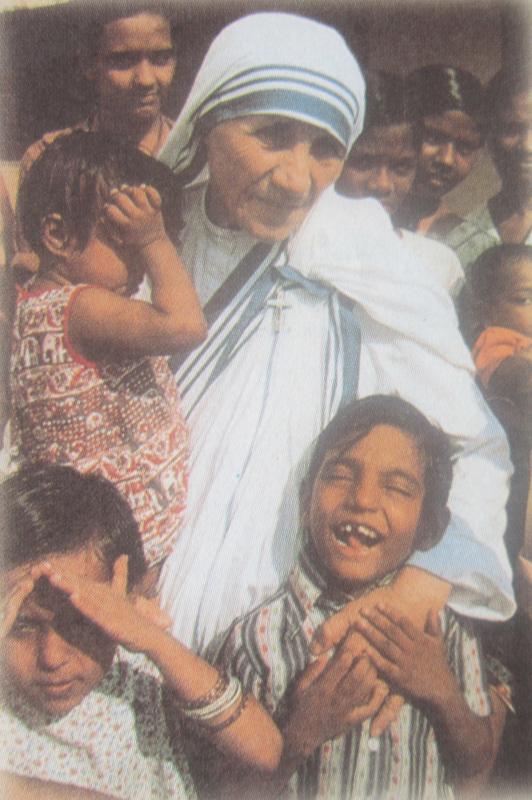 Vocation within a vocation
Vocation within a vocation
A year ago, Mother Teresa of Calcutta died, this extraordinary woman was born in Albania which subsequently became the first officially atheist country in the world. They young Albanian woman joined the Loreto Sisters. She was sent to Ireland to train.
Dying in the Streets
From there she was sent to India to teach in a Catholic School run by the Loreto Sisters. That was were she found her second ‘vocation within a vocation’. When the young Teresa went though Calcutta she saw people dying right here along the streets. She began to try to help. However she soon realized that this was a full time job. So she asked to be releases from the Sisters of Loreto and to start a small group of Sisters who would look after the dying in the streets.
Simple lifestyle
First, she was allowed a period of trial but eventually Rome accepted this new religious order with the special emphasis on looking after the dying and dedicated to a life of simplicity. For example, the posses only two saris and a bucket – no, TV, radio, or tape recorder is allowed in their convent
3,7000 Sisters
Soon Mother Teresa’s works develop. From looking after the dying, she took up other works like looking after abandoned babies, lepers, aids, victims and her own campaign for the unborn. Her Order spread from country to country. It‘s now all over the world including the Philippines. Today she has some three thousand sever hundred professes sisters in some hundred and twenty two countries.
A legend
When Mother Teresa died last year the whole world mourned. She has become a legend. The Indian Government gave her a state funeral and her body now rests at the Mother House in Calcutta.
State Funeral
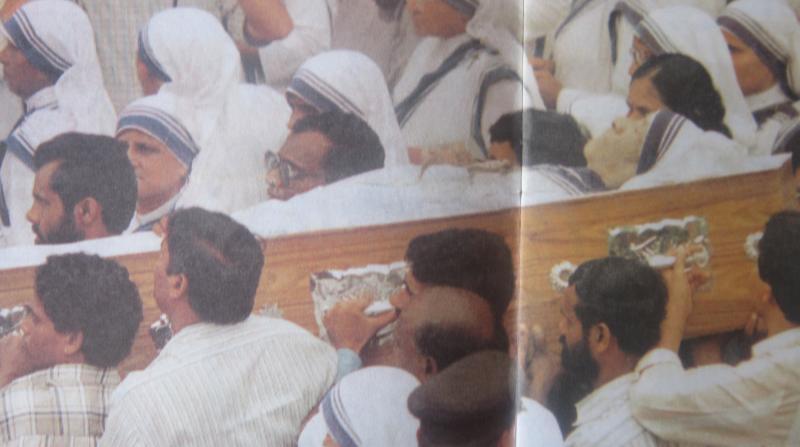
Vehement Critics
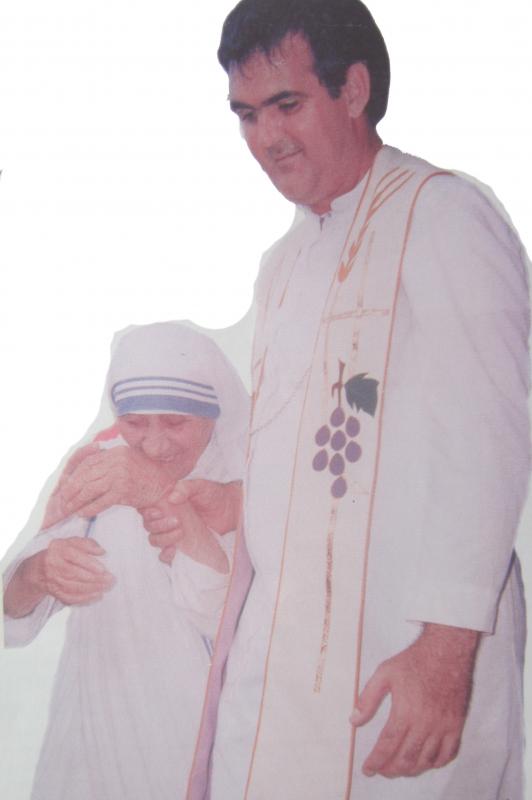
That was her actual real life experience. Soon she realized that even more than medicine these abandoned people needed affection, they needed the caring touch of a loving hand, the needed a tender word in the ear. Someone is here. Someone cares. Of course, some could be cured. But we must realize she was dealing normally with the very desperate cases. I am sure that that when Mother Teresa got a little on top of things and medicine flowed in she was able to give medicine (as do her sisters here in Bacolod, Negros) but showing love has always been her priority.
The Social Question
Another criticism was that she didn’t work to change the social situation or the political structure which gives rise to these unspeakable conditions. Not directly, that’ true. But Mother Teresa, like Diana, brought the images of the dying and destitute before the whole world so that their situation willy-nilly got on the social and political agenda of the world, in a way it would never have done if Mother Teresa had not made those gesture of love. Apart from that, if you’ve tried caring for a few healthy babies, not to mention caring for many dying people, you won’t have too much time left for changing world structures. The irony is that a woman who was formed before Vatican II and who did not therefore explicitly asked the social questions nevertheless that woman has so pierced the soul of India that the social question is now branded on its conscience.
She Spoke out Courageously
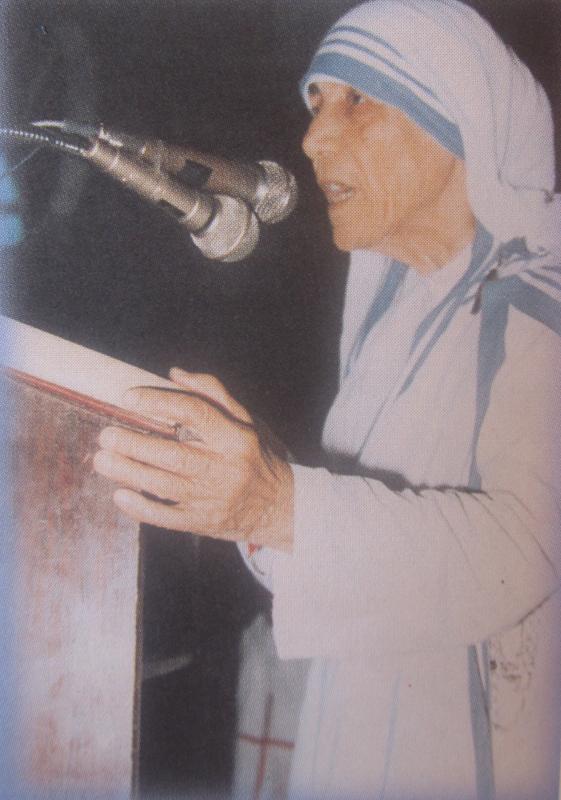
I suppose what is most threatening about Mother Teresa was her strong supernatural outlook. Certainly I myself felt threatened by her strong belief that this world is only a passing place and that we would prepare ourselves now in heaven. Who else in the world but Mother Teresa would have handed to the beautiful Diana a rosary beads. A reminder of the world to come. That’s the rosary beads that accompanied Diana to the grave.
Telegram from Purgatory
By Fr. Eammon Fleming
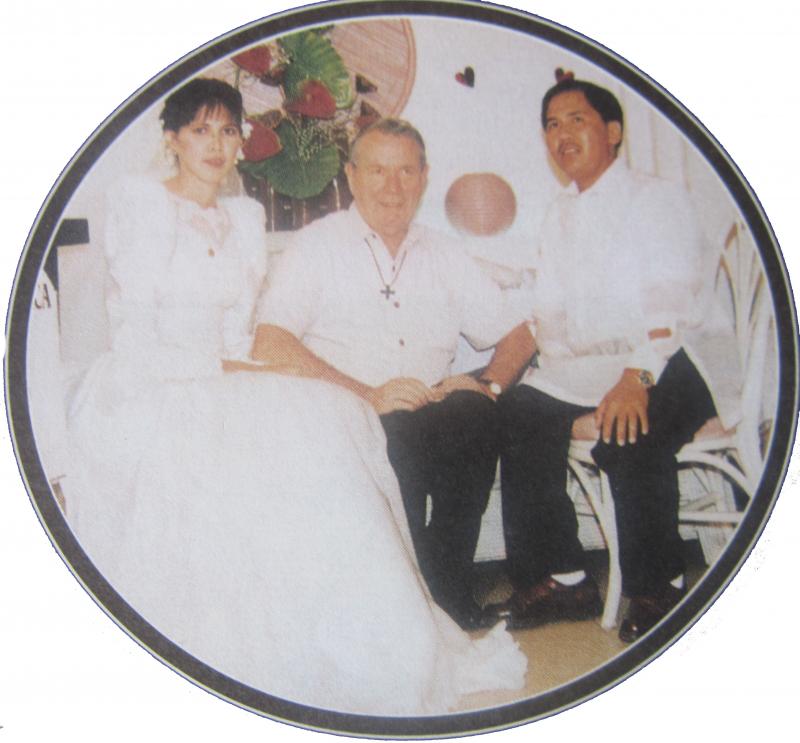
Students Stranded
During the Summer four young Christian students from a town on the other side of Lake Lanao called Balabagan came to the Mindanao State University (MSU) to the scholarship examination and they got board and lodging at the university for three days. Then the disturbance reached their town and they couldn’t return home. Two of the students were sons of a local public school teacher and the other two brothers with the most unusual surname Purgatorio were sons of the parish catechist in that town. When their funds ran out they naturally turned to the parish priest of St. Mary’s for help in that city of 45, 000 Muslims. Traditionally the parish Covento was open house to all Christian who were stranded. So I gave them free board and lodging for three weeks but eventually a decision had to be made as to which of the four would go home to inform the parents as to their whereabouts. I chose Michael Purgatorio and sent him off. He arrived home safe and sound and sent us a telegram to say that all was well.
Fatal Ambush
Four days later Michael and his younger brother Lito (who was not with us in Marawi City) decided to go on an errand to Cotabato City and they hitched a ride on a 6x6 army truck with some soldiers, a dangerous thing to do in the country even in peace time. The truck was ambushed by the rebels and Michael was killed. Lito got hit with shrapnel and a bullet pierced one of his insteps making a gaping whole. He was taken to the emergency ward of the local public hospitals in Cotabato and got first aid treatment for his wounds but as there was no payment forthcoming that was the extent of his medical treatment.
Recovery
Having heard of the sad news in Marawi City, I went to Cotabato and brought him personally to the orthopedic hospital of Dr. Angel Medina in Ozamis City where the Columbans had a Central House. After two or three months he recovered completely and was taken by an aunt to Cebu to pursue his third level of education in accountancy. After graduation he landed a good job in a supermarket in Davao City.
Happy Ending
Every October 28 I received a special telegram from Lito for my birthday and a card for Christmas. Last March we met for the first time in many years after I received the following telegram requesting me to solemnize his wedding to his beautiful wife Esther.
The invitation read:
“I could never forget the priest who saved my life and made it possible for me to walk again. Esther and I will be highly honoured if you will come to Davao and witness our exchange of vows in Holy Matrimony.”
This is Evangelization!
By Sr. Remedios Carmen Locsin, R.A.
In Japan, there are numerous immigrants often in precarious situations, uprooted as they are from their original culture and country. To help them find interior peace and be connection with their own history is to enable them to survive. Such is the mission I find myself in at the present moment in a section of Tokyo.
Multi-cultural Parish
After 20 years in Osaka where I was engaged in school apostolate, I arrived here in Tokyo two years ago, where we are starting a new foundation. Our apartments were we first lived is located just behind the Church of Kasai, a very dynamic parish, animated by the Augustinian Fathers. On Sunday, there is an afternoon English Mass attended by people from various countries: USA, India, Sri-Lanka, Lithuania, Korea, Vietnam, Singapore, and the Philippines.
Rosary Crusade
Some Filipinos married to the Japanese invited me to take part in their rosary crusade. I go with them every Saturday afternoon bringing statues of Our Lady of Fatima and the Sto. Niño. With each family, we pray the rosary, the litanies and sing hymns familiar to all. The family keeps the statue throughout the week and continues to pray the rosary.
Hunger for the Word
After some months, two women from the group requested me to help them him with the Bible better. We started this meeting with the “Lectio Divina” (reading of the Word quietly and prayerfully in community). Their hunger for the Word of God was so strong that this contact inebriated them and inflamed their desire to share their experience. Very soon the group of two became eight. Then these women had the idea of re-structuring our Saturday prayer in the home by adding Bible study with sharing. Some members of the group asked the parish priest to have a real Bible Study in English after the Sunday Mass. Thus, another group had been formed.
These women are delighted with the experience. They feel that they have grown in intimacy with the Lord and their life is thus transformed as well as their relationships with the people around them. They also reach out to those in need. All this has convinced me that apostles are born from contact with the Word of God and that Lectio Divina leads to contemplation. We usually end the Lectio Divina with moments of silent individual prayer.
After a year and a half we transferred to another parish, Shiomi Church, but I still continue with my apostolate at Kasai Church with the Filipinos. Aside from Shiomi Church I also go to Umeda where there are two Masses in English every Sunday. I go to Umeda for the Sunday school of the children. Fr. Nicolas, S.J., the spiritual adviser of the El Shaddai, requested me to prepare the first communicants and we had our first group of communicants last Dec. 1, 1996. So one of my apostolates is the catechism of young children.
Since there is rather a large number of Catholic immigrants in Japan and they form part of the Japanese Church, I personally feel that there is a real need for a more systematic Pastoral Care Program.
“All this has convinced me that apostles are born from contact with the Word of God and that Lectio Divina (prayerful scripture reading leads to contemplation. We usually end the Lectio Divina with moments of silent individual prayer.”
